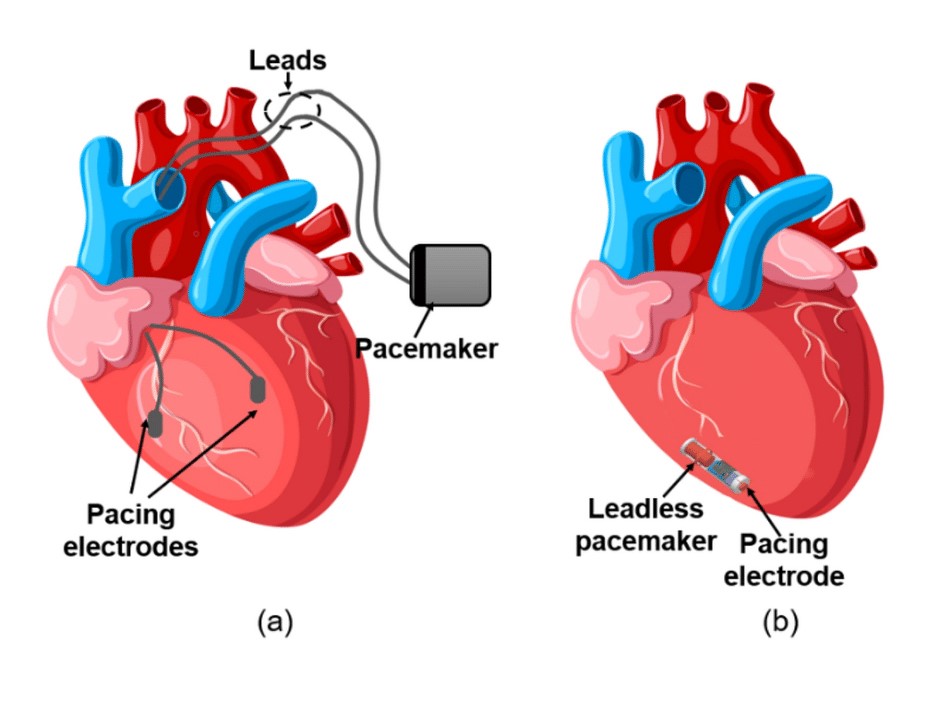 Posted on August 21, 2024
Posted on August 21, 2024
Dr. Girish B Navasundi: Pioneering the Future of Cardiology with Minimally Invasive Devices
Cardiac care has evolved significantly over the past decade, and one of the key players leading this transformation is Dr. Girish B Navasundi, a renowned cardiologist based at Apollo Hospitals, Bangalore. With his expertise in advanced cardiovascular treatments, Dr. Navasundi has established himself as a pioneer in using cutting-edge technology, particularly in minimally invasive devices like the Micra leadless pacemaker.
Revolutionizing Cardiac Care with Minimally Invasive Devices
Traditional pacemakers have played a vital role in regulating heart rhythms for patients with arrhythmias, but they come with certain limitations, such as the presence of leads, which can pose risks of complications. The introduction of leadless pacemakers like Micra has been a game-changer, offering a safer, more efficient alternative.
Dr. Girish B Navasundi has been at the forefront of implementing these advancements. Micra is a state-of-the-art, leadless pacemaker that offers several benefits over traditional pacemakers:
- Size and Minimization of Complications: The Micra is roughly the size of a large vitamin pill, making it 93% smaller than conventional pacemakers. Its size and lack of leads drastically reduce the chances of infection and complications that can arise from lead insertion.
- Implantation and Recovery: The device is implanted directly into the heart through a catheter, eliminating the need for surgical pockets or visible chest scars. This minimally invasive approach results in quicker recovery times and less discomfort for patients.
- Durability and Efficiency: Micra’s battery life can last up to 12 years, and it provides reliable pacing without the need for the traditional wires connected to the heart. This innovation reduces the long-term risks and maintenance that are associated with older pacemaker models.
Dr. Navasundi’s Approach to Cardiac Care
As a leading cardiologist, Dr. Girish B Navasundi believes in merging cutting-edge technology with patient-centered care. His approach emphasizes minimally invasive treatments that prioritize patient comfort and recovery, while still achieving optimal results.
At Apollo Hospitals, Bangalore, Dr. Navasundi works closely with his patients to diagnose and treat a range of cardiovascular conditions, from arrhythmias to heart failure. His expertise in deploying devices like Micra exemplifies his commitment to offering the most advanced and least intrusive solutions possible.
The Impact of Micra on Cardiac Patients
The benefits of using the Micra leadless pacemaker are profound:
- Improved Quality of Life: Patients no longer need to live with bulky devices and visible scars. Micra is discreet, which allows patients to carry on their daily activities without being reminded of their condition.
- Reduced Risk of Complications: The absence of leads reduces the risk of infections and complications related to device malfunction. This leads to fewer hospital visits and long-term medical concerns.
- Enhanced Patient Outcomes: Minimally invasive implantation techniques lead to faster recovery, shorter hospital stays, and improved overall outcomes for patients, especially those who are at high risk for surgery.
Difference Between Traditional Pacemakers and Leadless Pacemakers
Traditional Pacemakers:
- Consist of a pulse generator and insulated wires (leads).
- Leads are connected to the heart to regulate rhythm.
- Complications like infection, lead displacement, and malfunction are possible.
- Requires a surgical pocket in the chest.
- Visible scars are often present after implantation.
- Longer recovery time.
Leadless Pacemakers (e.g., Micra):
- Self-contained, small device implanted directly into the heart.
- No leads, reducing the risk of infection or displacement.
- No surgical pocket or chest incision required.
- No visible scars.
- Faster recovery time.
- Minimally invasive procedure using a catheter.
FAQs: Dr. Girish B Navasundi and Micra Leadless Pacemaker
1. What is a Micra leadless pacemaker?
The Micra leadless pacemaker is a small, wireless device implanted directly into the heart to regulate heart rhythms. Unlike traditional pacemakers, Micra does not require leads or surgical pockets, making it a minimally invasive option.
2. What are the advantages of using Micra over traditional pacemakers?
Micra is significantly smaller than traditional pacemakers, has no leads (which reduces the risk of complications), and can be implanted via a catheter with no visible scars. It also offers a longer battery life of up to 12 years.
4. How is the Micra pacemaker implanted?
The Micra pacemaker is implanted through a catheter inserted into the femoral vein in the leg. The device is then guided to the heart and placed directly in the right ventricle. This eliminates the need for surgical incisions in the chest.
5. What conditions does the Micra pacemaker treat?
Micra is used to treat conditions such as bradycardia (slow heart rate) and other arrhythmias that require pacing intervention to regulate the heart’s rhythm.
6. How long does it take to recover after Micra implantation?
Since the procedure is minimally invasive, recovery time is generally shorter than that for traditional pacemaker surgery. Most patients can resume their normal activities within a few days.
7. Are there any risks associated with Micra implantation?
As with any medical procedure, there are risks, but they are significantly lower with Micra due to the elimination of leads and surgical pockets. Complications related to infections or lead displacement are greatly reduced.
8. How long does the battery of a Micra pacemaker last?
The battery life of a Micra pacemaker can last up to 12 years, depending on usage and the patient’s pacing needs.
9. Can all patients with arrhythmias receive a Micra pacemaker?
Not all patients are eligible for Micra. Dr. Navasundi evaluates each patient’s condition to determine if Micra is the most appropriate option based on their medical history and cardiovascular health.
10. How can I schedule a consultation with Dr. Girish B Navasundi?
To schedule a consultation with Dr. Girish B Navasundi, you can contact Apollo Hospitals, Bangalore, directly.